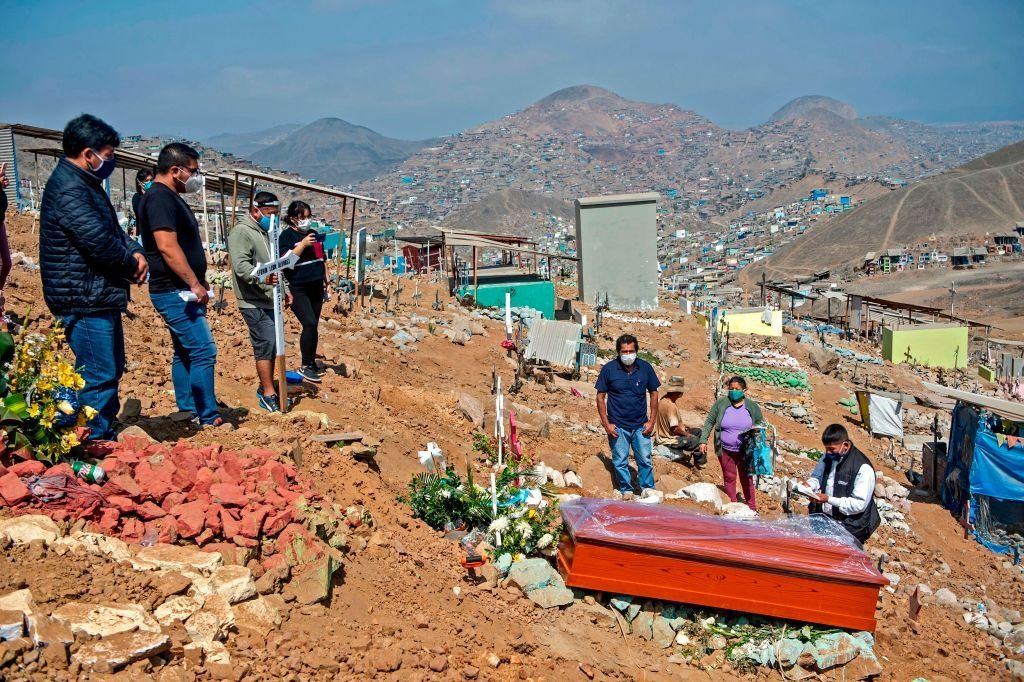Devasted Economies, Evaporating Quality of Life, the Legacy of the Global Pandemic
"The developed world had the advantage of being formal economies, where if you do a lockdown, people have access to unemployment insurance or social aid.""That didn't happen in much of the developing world. You saw a middle class move into poverty and the poor move into severe food insecurity."Maximo Torero Cullen, chief economist, UN Food Agency"We thought they [family children] were just depressed, but we took them to the clinic and found out they have anemia.""The doctor told me to feed them more. But with what money? With what food?""We don't have the virus, but the pandemic is killing us."Marimar Avila, 27, Lima slum, Peru"Many of the people facing a lack of access to food are the same ones who started having a better quality of life, some, even in the middle class, who had achieved a good status in life, maybe even a car.""During the pandemic, they lost all their income. It became a question of survival."America Arias, Peru director, Action Against Hunger charity"[My 30-year-old business, small-scale manufacturer of kitchen stoves] basically died in the pandemic.""Do you know what it's like to spend your whole life building a company, and then, to end up here [soup kitchen]?""What am I going to do now? My savings are gone. How am I going to rebuild?"Juan Tarazona, 57, San Martin de Porres, Lima, Peru
 |
| Photo: FAO |
The global pandemic has had many effects on people's lives, all of them hard and miserable, some dire. From personal bankruptcy to business collapses and national economic failures to issues of growing food scarcity in developing countries, all while governments everywhere focus on hoping to counter successive waves of COVID-19 outbreaks devastating their populations and their national treasuries. The pandemic has also had the effect of widening worldwide inequality with many nations facing serious food shortages.
The deleterious impact of the pandemic is seen through new data released by the United Nations where the unequal impact of the still-evolving situation emphasizes access to the most primary basic human necessity -- food -- has been exacerbated for many globally. A documented additional 118 million people worldwide were beset with food insecurity in 2020, leaping forward to 758 million people. Bringing the current number of people either living with food insecurity or forced to compromise on quantity or quality, to 2.38 billion people worldwide.
The formality of employment, social safety nets and availability of remote work conditions cushioned the effects of COVID isolation in North America and Europe where the percentage of people living with food insecurity rose from 7.7 percent to 8.8 percent. In the developing world where billions of informal workers and insecure government assistance prevail, the situation for populations was far more serious. More people are food insecure conventionally in Asia and Africa under normal circumstances.
Despite which, during and as a result of the global pandemic, Latin America and the Caribbean realized the largest one-year jump in food insecurity of nine percentage points to 40.9 percent, where there is also a chronic shortage of vaccines even as new waves of the virus continue to impact hugely, further contributing to unstable food access. It was Peru that saw the biggest surge in COVID infections and food scarcity.
Before the pandemic Peru had a commodities boom enabling it to cut poverty and malnutrition by 50 percent in the past two decades. That same South American nation now represents a study in deepening inequality where new national data illustrate a spike in poverty from 20 percent to 30 percent in one year. In many neighbourhoods people survive with the use of a "communal pot" representing a food station popping up in destitute quarters of the capital itself, where neighbours pool and share whatever food they have.
 |
| Peru has the highest Covid death rate as a proportion of population in the world, according to the latest data. Getty Images |
Latin America, considered largely to be a middle-income region, is also home to some of the most COVID-impacted places on Earth, suffering the largest relative increase in food insecurity as a result of the life-degrading quality of the SARS-CoV-2 virus causing COVID. Peru also happens to be the country with the highest COVID death rate per capita in the world. Despite that poverty and childhood malnutrition were halved in the past two decades. The goal was to end poverty in the nation altogether, a goal that has receded even as the pandemic has generated all manner of negative indicators.
A marked increase in maternal mortality in childbirth; an increase in deaths attributable to HIV infections, and falling university attendance rates. The nation that financial experts fully expected would join the ranks of high-income nations now struggles to support itself and its people in an atmosphere of degraded quality of life and dissolving opportunities to advance, thanks to the pandemic.
 |
| Foto: Southern Voice |
Labels: Food Scarcity, Global Pandemic, Increased Poverty, Peru, Spiralling Death Rate

0 Comments:
Post a Comment
<< Home